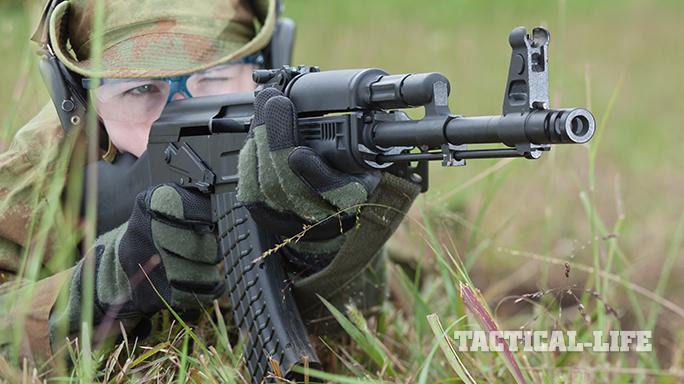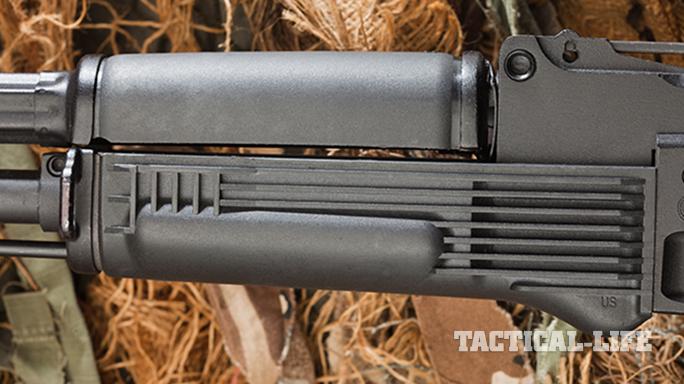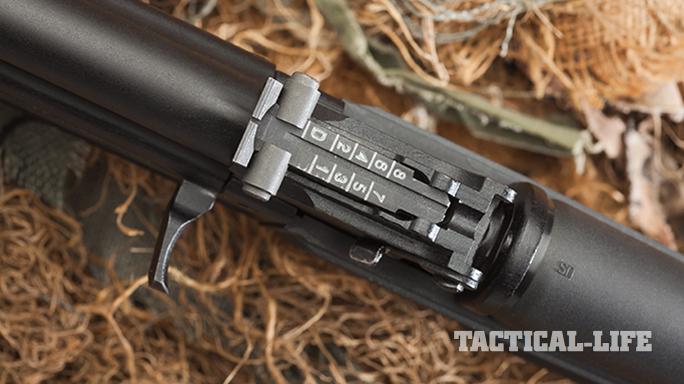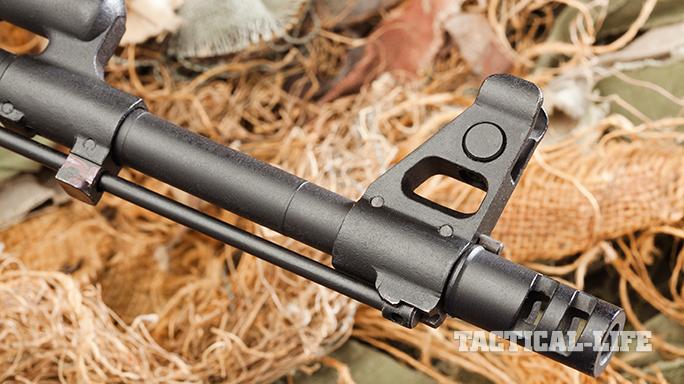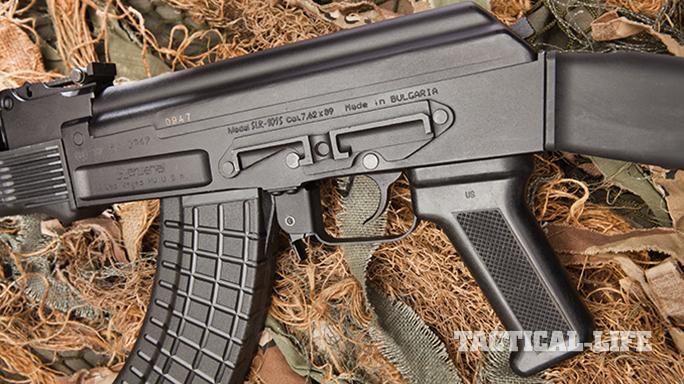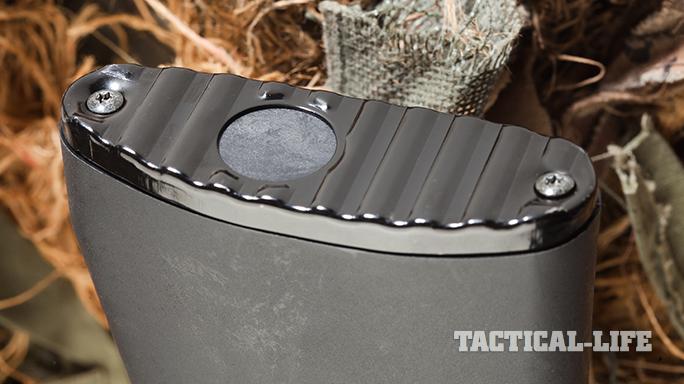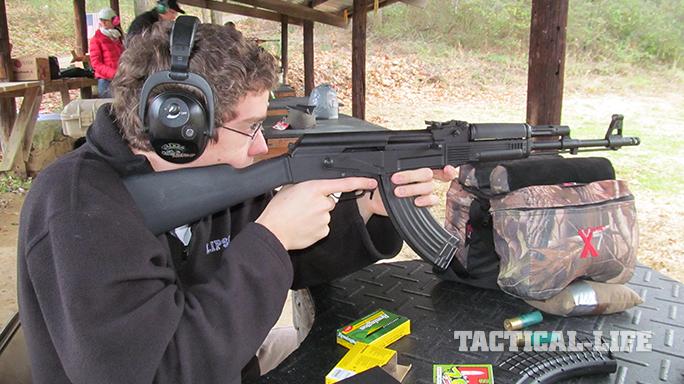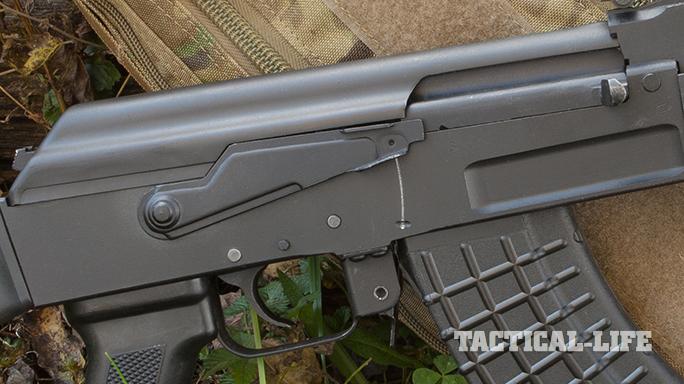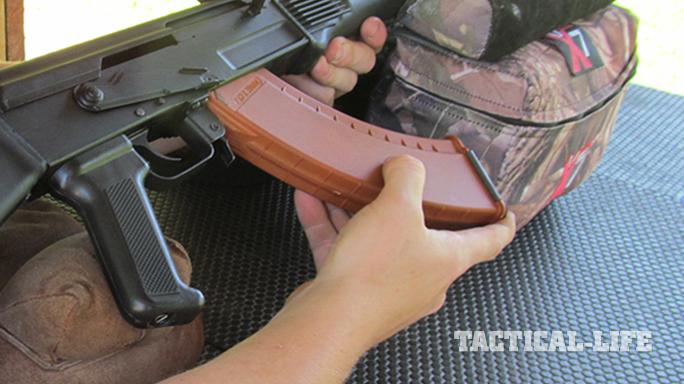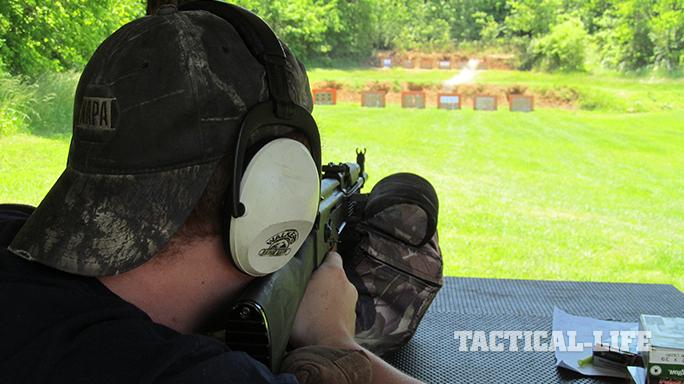Loose, cheap and as popular as it is reliable, the ubiquitous AK-47 has served many countries. With more than 100 million in circulation, the AK-47 is the most common assault rifle used around the world. Chambered in 7.62x39mm, the select-fire, gas-operated AK-47 was first developed in the USSR by Mikhail Kalashnikov. A throng of communist countries adopted the AK-47 and began building it in their own factories. These commonly known facts just scratch the surface of the AK’s history, but a look back in time reveals variations in manufacturing that have been reinvented by an American manufacturer.
Borrowing its name from Bulgaria’s state-owned Artillery Arsenal, Arsenal Inc. began manufacturing products in 2000 for the movie industry, government agencies and the shooting public. Since then, Arsenal has manufactured or imported more than 20 different versions of rifles in 7.62x39mm, 5.56mm NATO and 5.45x39mm chamberings. Believers in old-world craftsmanship, Arsenal’s engineers have incorporated modern manufacturing techniques to improve the overall quality of their weapons and manufacturing flexibility.
At Arsenal’s Las Vegas plant, the focus is on providing the American public with a wide variety of rifles that appeal to the needs of shooters, firearms enthusiasts and collectors. It offers rifles with several barrel lengths and chamberings with fixed or folding stocks. The flexibility of its manufacturing processes allows the company to switch between long- and short-run products. Recently, Arsenal introduced a line of rifles incorporating milled receivers above and beyond those currently on the market, offering a high-quality alternative to rifles made with stamped receivers and less attention to detail.
Advertisement — Continue Reading Below
Cold War Builds
Soviet engineers began working to build assault rifles toward the end of World War II, and Kalashnikov’s prototypes were put through trials after the war, in 1946. The design was officially accepted in 1949.
Digging deeper into the gun’s history, I consulted with Kyle Lynch, a firearms expert and AK aficionado. What I learned is that the rifle was originally designed to use a stamped sheet-metal receiver with parts welded onto the receiver, but Soviet firearms engineers identified problems with the original design.
Difficulties were encountered in welding the guide and ejector rails, causing high rejection rates on assembly lines. Instead of halting production, a milled receiver was substituted for the sheet-metal receiver. This was a costly process, but the use of machined receivers accelerated production. Tooling and labor from the earlier Mosin-Nagant rifle’s machined receiver were easily adapted to AK manufacturing. Partly because of these problems, the Soviets were not able to distribute large numbers of the new rifle to soldiers until around 1956. During this time, production of the interim SKS rifle continued. Throughout the 1950s, the milled receivers were perfected to resolve many of the performance issues, but by the end of that decade, technology had advanced enough for riveted components to work in stamped receivers
Advertisement — Continue Reading Below
- RELATED STORY: 8 Quick and Easy DIY Upgrades to Trick Out Your AK
Once manufacturing difficulties had been overcome, a redesigned version designated the AKM (“M” for “modernized”) was introduced in 1959. This new model used a stamped sheet-metal receiver and featured a slant muzzle brake. In addition, a hammer retarder was added to prevent the weapon from firing out of battery (without the bolt being fully closed) during rapid or fully automatic fire. This is also sometimes referred to as a “cyclic rate reducer,” or simply a “rate reducer,” as it reduces the number of rounds fired per minute during automatic fire. The AKM was also roughly a third lighter than the previous model.
Partially due to the simplified production of the stamped receiver, the AKM design represented the majority of both licensed and unlicensed AK-type weapons produced abroad. Having been produced in much greater quantities, this model is the most commonly encountered. Of course, it should be noted that while all rifles based on the Kalashnikov design are frequently referred to as “AK-47s” here in the United States, this is only technically correct when applied to rifles based on the original receiver type. In former Eastern Bloc countries, these weapons are known simply as “Kalashnikovs” or “AKs.”
Stamped Vs. Milled
The SAM7R uses a special milled receiver, but what does that mean exactly?
Advertisement — Continue Reading Below
As Kyle Lynch put it, “Theoretically, a milled-receiver gun is more rigid and accurate than a stamped-receiver gun. Milled-receiver guns are almost a pound heavier than stamped-receiver guns. Milled guns have heavier barrels, too. The handguards of the two types are a little different. They won’t interchange. The pistol grip is retained on a stamped-receiver gun [and] is bolted in. On a milled gun, there is a plate that is threaded.”
As you can see, there are many differences between the receiver types for one to consider when purchasing an AK-47. A milled receiver is typically much more robust and will last much longer in comparison to a stamped receiver. However, milled receivers are made with solid steel, making them much heavier. Stamped receivers are made from thin, flat metal and bent into their box shape. This, by nature, makes them much lighter. The milling process for the receiver takes much longer than the stamping process, making them more expensive.
Arsenal offers both milled- and stamped-receiver models. But Arsenal’s milled receiver is an improvement on two fronts. Not only is it more accurate, but the tolerances are much tighter, making for a smooth-operating firearm. This is an excellent platform for shooters who want the legacy or prefer the look and feel of an AK but are unimpressed with the accuracy potential of the original stamped-receiver AK-47s.
Advertisement — Continue Reading Below
Of course, the stamped receiver offers an economic alternative to the milled receiver, but that does not mean quality is compromised. The stamped receiver is still very strong, durable and long lasting. No firearm is considered for Arsenal’s product line unless it meets the highest of standards with regard to quality and passes a rigorous, multi-point inspection process before being sold. As Arsenal’s Harry Pakhanyan says, “The milled receiver will last you two lifetimes. The stamped receiver will last you one.”
How are Arsenal’s milled receivers diferent? It all comes down to how they’re manufactured. “Our exclusive milled and forged receiver is manufactured from a hot-die, hammer-forged receiver blank from Arsenal of Bulgaria,” Pakhanyan said. “Other AKs with milled receivers are machined from bar stock. Arsenal’s hot-die, hammer-forging process produces stronger, finer-grained steel and eliminates the potential for any deformities caused during the cooling process.” In other words, the 5-ton hammer forging process elminates an internal voids and cooling deformations in the steel, resulting in a stronger, more uniform foundation for the rest of the rifle.
On top of all that, the forged receiver blanks for each SAM7R rifle undergo more than 5.5 hours of milling prior to assembly. That’s exceptionally time consuming, but it shows how much attention to detail is poured into each gun.
Advertisement — Continue Reading Below
The markets for milled and stamped receivers are both extremely strong. Die-hard enthusiasts and collectors gravitate toward the milled receiver because they prefer the absolute best and superior quality for the collection. The stamped receiver, an economically priced alternative to the milled receiver, is naturally attractive to the budget-minded enthusiast.
Hands On
The SAM7R lined debuted in January of 2013, and demand has driven the series to expand dramatically. Each model makes for is an incredible addition to any collection. “Not too long ago, we announced two new looks for the rifle,” Pakhanyan said. “One version utilizes the Bulgarian four-piece flash suppressor—a point of preference for many enthusiasts. The other configuration attaches a Warsaw-length buttstock and a wider pistol grip.” These changes were offered due to direct feedback from Arsenal’s customer base. These rifles are available in a wide variety of configuration options, making for a very fun, customizable weapon system. A little while back, I got my hands on a standard 7.62x39mm model, catalogued as the “SAM7R-61,” for testing.
When I first handled the test rifle, I almost missed some of the smaller details in the stark contrast between the original AK-47 and this well-oiled machine, which is completely built from scratch to some very tight tolerances.
Advertisement — Continue Reading Below
The 16.3-inch-long, cold-hammer-forged barrel is made in Arsenal’s Bulgarian factory using Steyr machinery, and it features 14x1mm left-hand threading. A four-port muzzle brake was included on my test rifle to help reduce recoil and muzzle rise. Of course, this particular device can be easily replaced with a flash or sound suppressor to better suit your needs and preferences. Internally, the bore and chamber have been chrome plated.
According to Kyle Lynch, further examination of the SAM7R reveals that “Arsenal is bringing in single-stack guns and adds the proper number of American-made parts.” Lynch continued, “The Arsenal receivers are opened up to accept double-stack magazines.” And my test rifle came with a 30-round magazine sporting a Bulgarian waffle-style pattern on the outside, which makes it easier to grip while wearing gloves, for example.
- RELATED STORY: Russia’s RPK-74 LMG – A Faithful Servant Since 1974
The left side of the receiver hosts a typical AK scope rail, which complements the standard AK-style front and rear sights. A bayonet lug and cleaning rod are also included.
Advertisement — Continue Reading Below
The pistol grip, forend and buttstock are constructed from ABS plastic, which is obviously more durable and comfortable than the original wooden or Bakelite designs. The pistol grip features checkering that provides traction even when your hands are wet or sweaty. You’ll definitely appreciate smaller details like this when you’re faced with adverse conditions.
You’ll notice that the polymer buttstock has an internal storage compartment, accessible through the buttpad, for spare parts or a cleaning kit. This is a handy feature that stays out of the way yet is easy to access when needed. The metal buttplate adds additional durability and protection from cracking. The grooves in the buttplate help lock the rifle into your shoulder while aiming, which can help you get back on target quickly for follow-up shots downrange.
The buttstock offers a 13.4-inch length of pull, and the sling swivel on the left side is attached in a way that allows more motion when the firearm is being carried. Comfort improvements such as this have helped close the gap between assault rifles and sporting rifles, making the SAM7R a great choice for any performance-minded enthusiast or collector.
Advertisement — Continue Reading Below
Of course, if this polymer stock isn’t to your liking, you can chose another configuration or replace it, as many of the SAM7R’s parts are interchangeable with stamped-receiver AKs. Prices vary depending upon the configuration, but the SAM7R I tested has an MSRP of $1,299.
SAM7R Slugger
On the range, the SAM7R impressed me, a shooter only familiar with traditional stamped-receiver AK-47s. Arsenal’s masterpiece performed without a flaw and shot accurately considering the conditions and open sights. The action was smooth, and the trigger was crisp with reduced creep—a definite improvement over the AK’s original trigger design, which has scared off many shooters.
The rifle would have created tighter groups with the addition of an optic, but it produced several tight five-shot groups. I ran four brands of ammunition through the SAM7R to determine its accuracy potential at 100 yards with front and rear sandbags, and I measured each load’s velocity with an Oehler Model 35P chronograph.
All of the loads produced similar-sized groups, but the PMC 123-grain full metal jacket (FMJ) ammunition performed the best, creating a 4.56-inch group. Next in line for performance was Hornady’s steel-cased, 123-grain Z-MAX load, which produced a 4.99-inch group. Federal Premium’s 123-grain soft points (SPs) came in third place with a best five-shot group of 5.1 inches. The Remington 123-grain UMC spitzer loads were the least consistent with a 5.21-inch group.
Arsenal’s SAM7R features a sturdy, milled receiver that harkens back to the pinnacle of Soviet AK rifle design improvements from a half-century ago. Add a few metallurgy improvements from today’s technology and you may have the best AK ever built. Try one for yourself and you won’t be disappointed.
Caliber: 7.62x39mm
Barrel: 16.3 inches
Weight: 8 pounds (empty)
OA Length: 36.5 inches
Stock: Polymer
Sights: Front post, adjustable rear
Action: Piston-operated semi-auto
Finish: Matte black
Capacity: 30+1
MSRP: $1,299
For more information, visit arsenalinc.com or call 702-643-2220.
